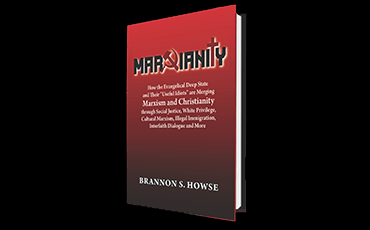The Liberal’s Quiet Revolution: Linking The The Fourteenth Amendment & Stripping States of the Freedom of Religion
The changes that bloomed in the 1960s actually began about twenty years earlier. In 1947, the U.S. Supreme Court issued a ruling in the case of Everson vs. Board of Education, concerning whether it was constitutional for tax funds to pay for the transportation of students to a private, religious school. While it did not find it unconstitutional, the Court did, for the first time, use Thomas Jefferson’s “wall of separation” phrase completely out of context.
While it was troubling for the Court to use Jefferson’s words out of context, the most disturbing part of the Everson case was the silent revolution the Court thus began. For all practical purposes, the justices held their own constitutional conventions in the 1940s (the first of a number of “Court conventions”) in which they eliminated the Tenth Amendment and stripped every state in the Union of their constitutionally protected freedoms.
U.S. Supreme Court Justice William Douglas, in Walz vs. Tax Commission (1970), comments on what he views as a “revolution” resulting from the unconstitutional linking of the First and Fourteenth Amendments: “reversing the historic position that the foundations of those liberties rested largely in State law. . . . [T]he revolution occasioned by the Fourteenth Amendment has progressed as Article after Article in the Bill of Rights has been [selectively] incorporated in it [the Fourteenth] and made applicable to the States.” (Footnote Note #48)
Turning the Bill of Rights on Its Head
Of the delegates that attended the Constitutional Convention in Philadelphia in 1787, only thirty-nine out of fifty-five signed the Constitution. Many of those who refused to sign the Constitution did so because they believed the Constitution did not contain the safeguards necessary to keep the central government in check. In addition, several states barely approved the Constitution, and North Carolina refused to ratify it until stricter limits were placed on the power of the federal government—to keep it from trampling the rights of the states.
In George Washington’s first inaugural address, he asked Congress to amend the U.S. Constitution so as to further protect our freedoms, and on December 15, 1791, the first ten amendments—the Bill of Rights—were ratified. These amendments were designed as ten handcuffs placed on the central government to limit its power and protect the God-given rights of the states and their people. In other words, the Bill of Rights was intended to protect the states from tyranny by the federal government.
Samuel Adams described this purpose when he wrote, “to see a line drawn as clearly as may be between the federal powers vested in Congress and distinct sovereignty of the several States upon which the private and personal rights of the citizens depend. Without such distinction there will be danger of the Constitution issuing imperceptibly and gradually into a consolidated government over all the States. . . . [T]he population of the U.S. live in different climates, of different education and manners, and possessed of different habits and feelings [and] under one consolidated government cannot long remain free” (Footnote #49)
Beginning in 1940, in the case Cantwell vs. Connecticut, then in 1943, Murdock vs. Pennsylvania, and finally, in 1947, Everson vs. Board of Education, the U.S. Supreme Court re-defined the Fourteenth Amendment and laid the foundation for the silent revolution.
The Fourteenth Amendment
The damage done to the Fourteenth Amendment centers on this phrase: “All persons born or naturalized in the United States and subject to the jurisdiction thereof, are citizens of the United States and of the State wherein they reside. No State shall make or enforce any law which shall abridge the privileges or immunities of citizens of the United States” (Footnote #50)
With the 1940 (Cantwell vs. Connecticut), 1943 (Murdock vs. Pennsylvania), and 1947 (Everson vs. Board of Education) U.S. Supreme Court decisions, the Court took off the handcuffs that had restrained the federal government’s power and placed those cuffs on the states. Now the federal courts were empowered to decide when and what rights the states could practice.
Stripping States of the Freedom of Religion
(and More!)
Once the Fourteenth Amendment was misapplied by the Court—and Congress allowed it to stand—the Court was free to apply the Fourteenth Amendment to the First Amendment as it did in the Everson vs. Board of Education. What followed was a series of natural steps further in the direction of judicial tyranny.
In the 1963 case Abington vs. Schempp, the U.S. Supreme Court stated that this new national policy established by the 1947 Everson case settled the issue of the meaning of the First Amendment: “[T]his Court has decisively settled that the First Amendment’s mandate that ‘Congress shall make no law representing an establishment of religion, or prohibiting the free exercise thereof’ has been made wholly applicable to the States by the Fourteenth Amendment. . . . The Fourteenth Amendment has rendered the legislature of the States as incompetent as Congress to enact such laws.” (Footnote #52)
In other words, by linking the First and Fourteenth Amendments, the Court declared that “Congress” is no longer simply a reference to the U.S. Congress. It now means a state through its legislature cannot allow, endorse, permit, or acknowledge any religious activities or symbols.
In 1970, U.S. Supreme Court Justice William Douglas openly acknowledged that the Court’s 1947 decision infringed on state rights, and he recognized the revolutionary implications: “involved the imposition of new and far-reaching constitutional restraints on the States. Nationalization of many civil liberties has been the consequence of the Fourteenth Amendment, reversing the historic position that the foundations of those liberties rested largely in State law. . . . And so the revolution occasioned by the Fourteenth Amendment has progressed as Article after Article in the Bill of Rights has been incorporated in it and made applicable to the States.” (Footnote #53)
As the Founders debated the First Amendment, they agreed the First Amendment was crafted solely for the purpose of prohibiting the federal government from establishing a church or national denomination. They were equally clear that if the people of any particular state wanted to establish a state church of their own, the state government was free to do so. Supreme Court rulings from 1947 through 2000, though, have relentlessly attacked that freedom. The Court has now succeeded in outlawing state-sponsored prayer in schools, Bible reading, the posting of the Ten Commandments, and student-initiated prayer. The Founding Fathers would be appalled that judges were allowed to so ruthlessly use the Constitution to strip the states of their God-given rights.
Ideas and Their Consequences
The courts are clogged with lawsuits filed by liberal groups such as the ACLU and Americans United for the Separation of Church and State (AU). Virtually every case is filed on behalf of someone or some group alleging that another has violated the mythical separation of church and state. Consequently, the separation lie has stripped Americans of the right to openly practice the Christian faith anywhere not approved by liberal judges. Several examples of the squashing of religious freedom are worth noting:
• Patrick Cubbage was fired from the Brig. Gen. William C. Doyle Veterans’ Memorial Cemetery in North Hanover, New Jersey, because the Department of Veteran Affairs did not want him to say “God Bless” when presenting the flag to veterans’ families at funeral service. (Footnote #54)
• A federal district court upheld a Washington high school’s refusal to recognize a student Bible club as it had other student clubs. The Kent School District says other student clubs—including the Gay-Straight Alliance and Multicultural Student Union—are permissible, but a Bible club is not. The district has a non-discrimination policy that allegedly prevents all types of discrimination. However, the school actively discriminates against the Bible club merely because it has a provision that voting members must actually believe in the Bible. While the Bible club is open to all students, it has a constitutionally protected right to establish voting membership qualifications in order to preserve the religious nature of the club. The Alliance Defense Fund is appealing the federal district court ruling. (Footnote #55)
• A judge in Houston, Texas, ordered Harris County to remove a Bible from a monument outside its civil courts building, ruling that the display violates the constitutional separation of church and state. (Footnote #56)
• A teacher’s aide in Indiana County filed a federal civil rights lawsuit against her employer, saying she was unfairly suspended from her job for a year without pay for refusing to remove a small cross she wears as a necklace. (Footnote #57)
• The Tennessee Department of Children’s Services disapproves of the practice of a successful children’s home taking its child residents to church each week. As a result, the state agency discontinued referring children to the care facility. (Footnote #58)
• The ACLU successfully demanded that Breen Elementary School in Rocklin, California, remove a “God Bless America” sign posted after the attacks of September 11, 2001. (Footnote #59)
Footnotes:
48 Walz vs. Tax Commission, 397 U.S., 701–703 (1970); Douglas, J. (dissenting).
49 Samuel Adams, The Writings of Samuel Adams, Harry Alonzo Cushing, ed., vol. 4 (New York: G. P. Putnam’s Sons, 1908), 332, letter to Elbridge Gerry.
50 Fourteenth Amendment, U.S. Constitution.
52 Abington vs. Schempp, 374 U.S. 203, 215–16 (1963).
53 Walz vs. Tax Commission, 397 U.S. 664, 701, 703 (1970), Douglas J. (dissenting).
54 Todd Connor, Fox News, August 21, 2003.
55 Alliance Defense Fund press release, September 23, 2004.
56 Jerry Newcombe, research.
57 Torsten Ove, staff writter, Post-Gazette, May 7, 2003.
58 www.Worldnetdaily.com, April 1, 2004.
59 Ryan McCarthy, The Sacramento Bee, October 6, 2001.




